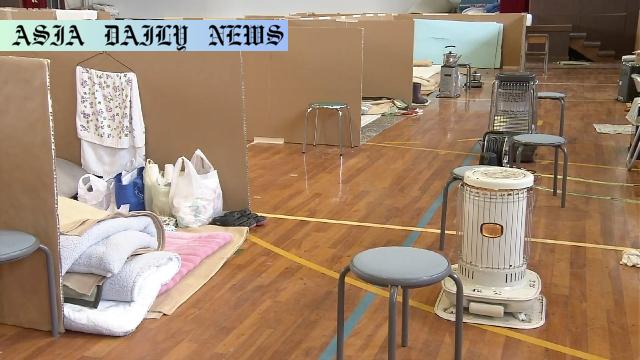Disaster preparedness: NHK survey reveals critical gaps in municipalities’ plans for evacuation and essential supplies in Japan.
Many municipalities in Japan lack critical supplies and plans to manage disaster-related deaths from a Nankai Trough megaquake.
94% of municipalities face challenges like limited storage space, budget constraints, and estimation difficulties for stockpiling supplies.
91 municipalities (68%) have no functioning panels or plans for operating evacuation shelters or managing essential services like toilets.

Japan’s Municipalities Unprepared for Disaster-Related Deaths
Japan’s vulnerability to large-scale natural disasters such as earthquakes and tsunamis, particularly from the anticipated Nankai Trough megaquake, has brought disaster preparedness to the forefront of national concern. Yet, despite the high risk, a recent NHK survey has revealed alarming levels of unpreparedness among municipal governments. The survey, conducted in 14 prefectures, evaluated 139 municipalities tasked with developing measures to counter disaster-related deaths following a major event. These deaths, which occur among survivors of the initial disaster, are often caused by poor health conditions and inadequate resources in evacuation shelters.
The report found that while municipal authorities are aware of the risks, a large majority have not met the requisite standards for stockpiling essential supplies. For instance, 39% of local governments had no stockpile of air conditioning equipment, and 15 municipalities lacked portable toilets. Portable beds were also absent in 15 municipalities, though some relied on partner organizations for future supplies. A staggering 93% acknowledged that their preparation of stockpiles is inadequate, citing challenges such as a lack of storage space (94%), budget shortfalls (72%), and difficulty estimating required inventory (30%). This lack of foresight poses significant challenges in disaster mitigation and response.
Key Administrative Gaps: Absentee Evacuation Plans
Beyond resource shortages, perhaps more critically, many municipalities lack robust planning for evacuation shelters and essential amenities. About 68% of surveyed municipalities have not even established planning panels or functional bodies to manage evacuation shelters and essential services in times of crisis. Toilet installation and management, for instance, remains uncoordinated in 63% of the municipalities surveyed, highlighting deep systemic gaps in administrative and logistical preparedness. Additionally, municipal officials have attributed delays and gaps in planning to financial constraints and the labor-intensive nature of disaster planning. This lack of preparedness could severely disrupt responses to a Nankai Trough earthquake, especially in areas expected to be hardest hit.
Preparing for the Worst: The Impact of Inaction
The Japanese government has estimated that a Nankai Trough-based megaquake could result in approximately 52,000 disaster-related deaths in a worst-case scenario. The absence of air conditioning in evacuation shelters would expose vulnerable populations, such as the elderly, to heat-related illnesses, while the lack of clean and portable toilets raises risks of disease outbreaks. Insufficient beds and cramped conditions could exacerbate chronic health problems, particularly among those already frail. These dire outcomes underscore the necessity for municipalities to intensify their preparedness measures and align with best practices for disaster management.
Solutions and Policy Implications
Experts recommend that the central government and local municipalities urgently develop collaborative frameworks to address the issues highlighted in the NHK survey. Increased budget allocations, innovative storage solutions, and integrated resource-sharing systems could alleviate constraints faced by municipal authorities. Additionally, municipalities must establish responsive panels to coordinate disaster relief, plan evacuation logistics efficiently, and manage supplies effectively. These actions will ensure that essential needs such as portable toilets, air circulation systems, and beds are adequately supplied and managed during disasters.
Furthermore, public awareness campaigns play a critical role in fostering individual and community-level preparedness. Municipalities can engage in educational outreach programs to underscore the importance of personal emergency kits and home-based disaster readiness. Collaboration across public, private, and community sectors is integral to mitigating potential losses of life and ensuring that Japan’s preparedness aligns with its seismic vulnerabilities.
Commentary
Reflection on Japan’s Disaster Preparedness Challenges
It is disheartening to observe the persistent gaps in disaster preparedness in an earthquake-prone country like Japan, particularly in the context of the Nankai Trough megaquake. The staggering statistics highlighted by this survey offer a grim reminder of the potential human toll of unpreparedness. While Japan is globally recognized for its advanced early-warning systems and earthquake-resistant infrastructure, it seems that some equally critical aspects—such as resource management and emergency planning—have been overlooked or delayed.
The Need for Proactive Measures
The lack of functional plans for managing shelters, stockpiling essential supplies, or organizing evacuations is alarming, especially when considering that over 52,000 lives could be lost due to the secondary effects of such a disaster. The absence of necessities like air conditioning, portable toilets, or disaster panels points to a systemic oversight that needs immediate addressing. While budget shortfalls and storage space constraints are real challenges, they should not impede progress in potentially life-saving measures. The government must see this not as a mere administrative issue but as a national security priority central to public welfare.
Collaboration and Hope for Improvement
Ultimately, addressing these challenges requires unity among the central government, local authorities, and the public. Budget reallocations, smart technological storage solutions, and efficient disaster simulations can pave the way for improvement. With Japan’s history of resilience and innovation, these challenges should be surmountable. However, prompt action is vital to ensure that when the next disaster strikes, lives will be safeguarded by better preparedness rather than compromised by failures in planning and execution.


